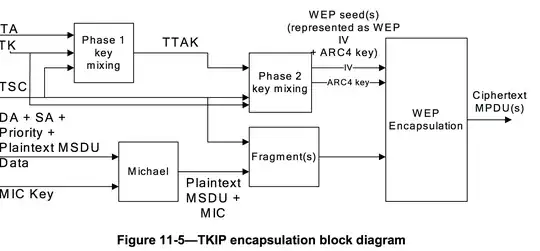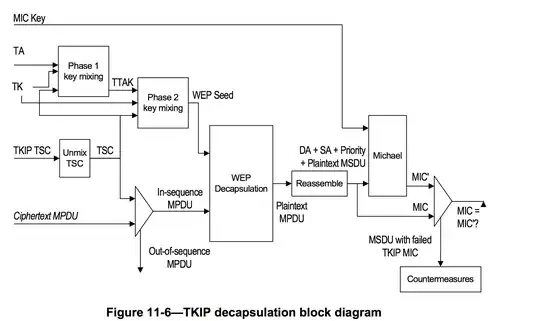I'm reading about 802.11, from IEEE's PDF, from page 1191, and in particularly I'm reading about TKIP. To decrypt and encrypt, you use a TSC (TKIP Sequence Counter) as you can see in these images:


How, and from what, is the TSC calculated?
I'm reading about 802.11, from IEEE's PDF, from page 1191, and in particularly I'm reading about TKIP. To decrypt and encrypt, you use a TSC (TKIP Sequence Counter) as you can see in these images:


How, and from what, is the TSC calculated?
TSC is just a counter used for anti-replay mechanism and it increases by 1 for every MPDU. Thus, its value depends on the sequence of the MPDU. I am not quite certain about its initial value but i suppose it depends on the implementation as usually.
TSC is a 48-bit counter. It is initialised to 1 every time the TKIP temporal key is initialised or refreshed.
Each MPDU must be sent with a unique/different TSC, to protect against replay attacks. It is incremented by 1 for each subsequent use.